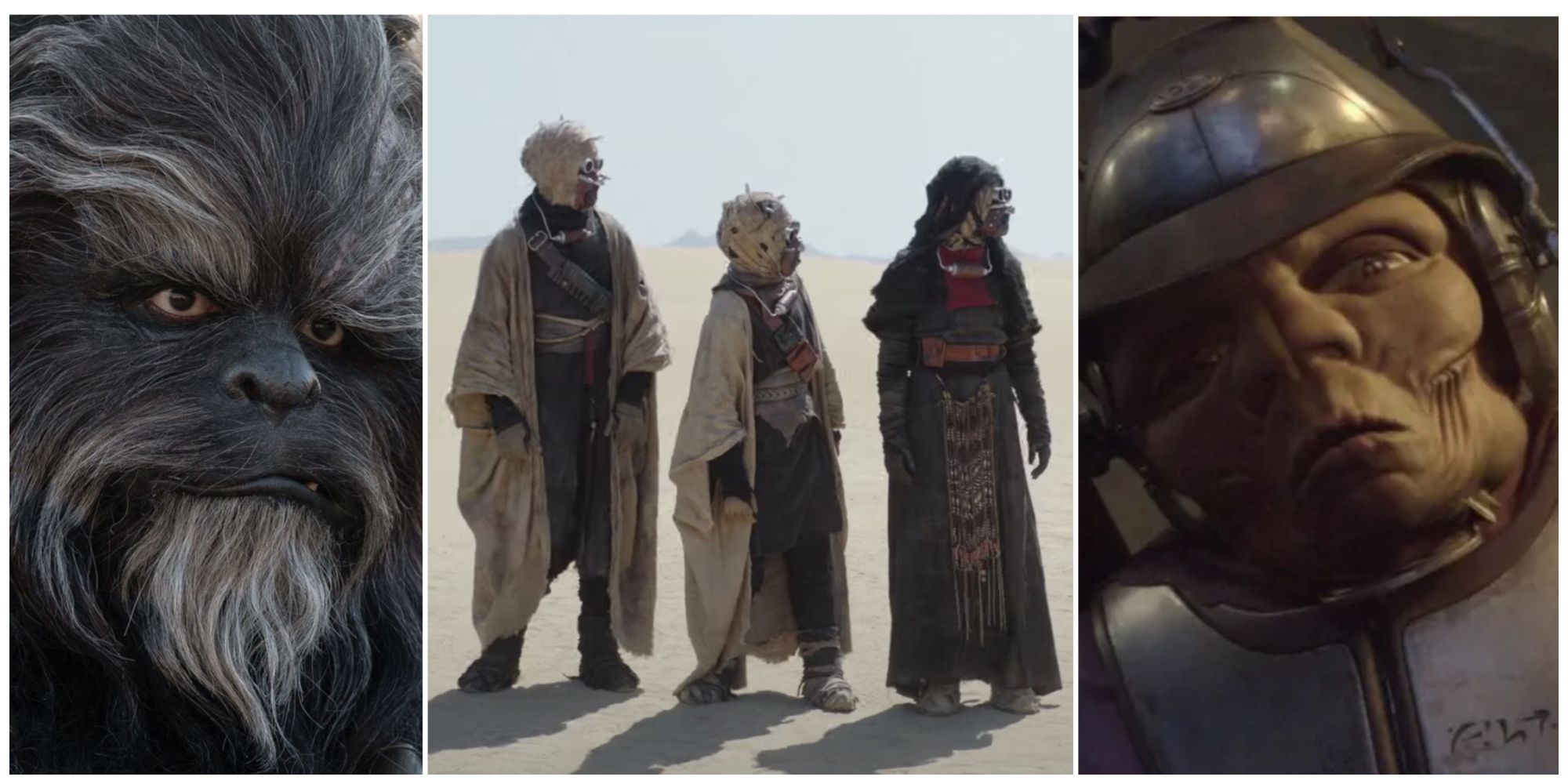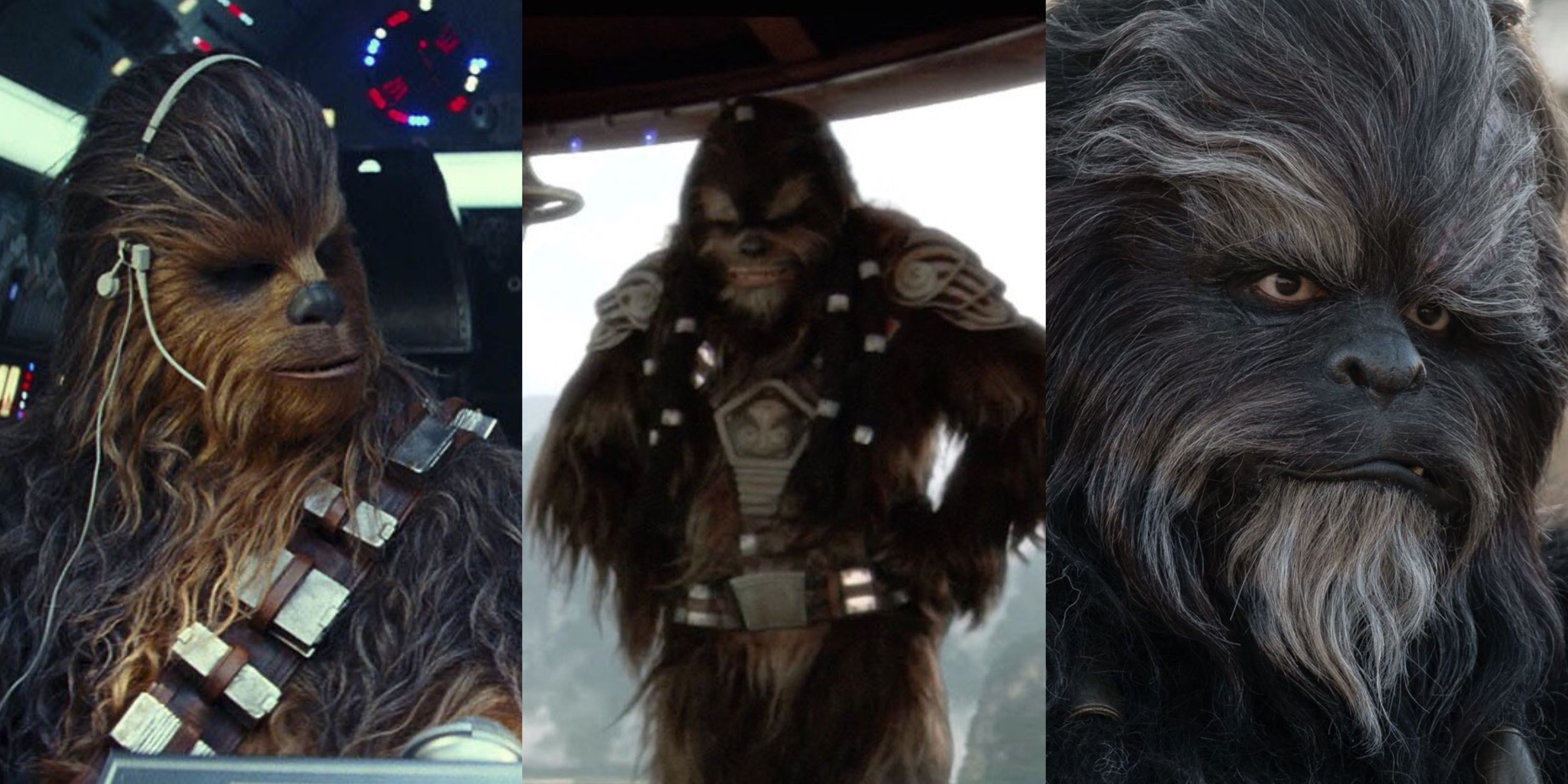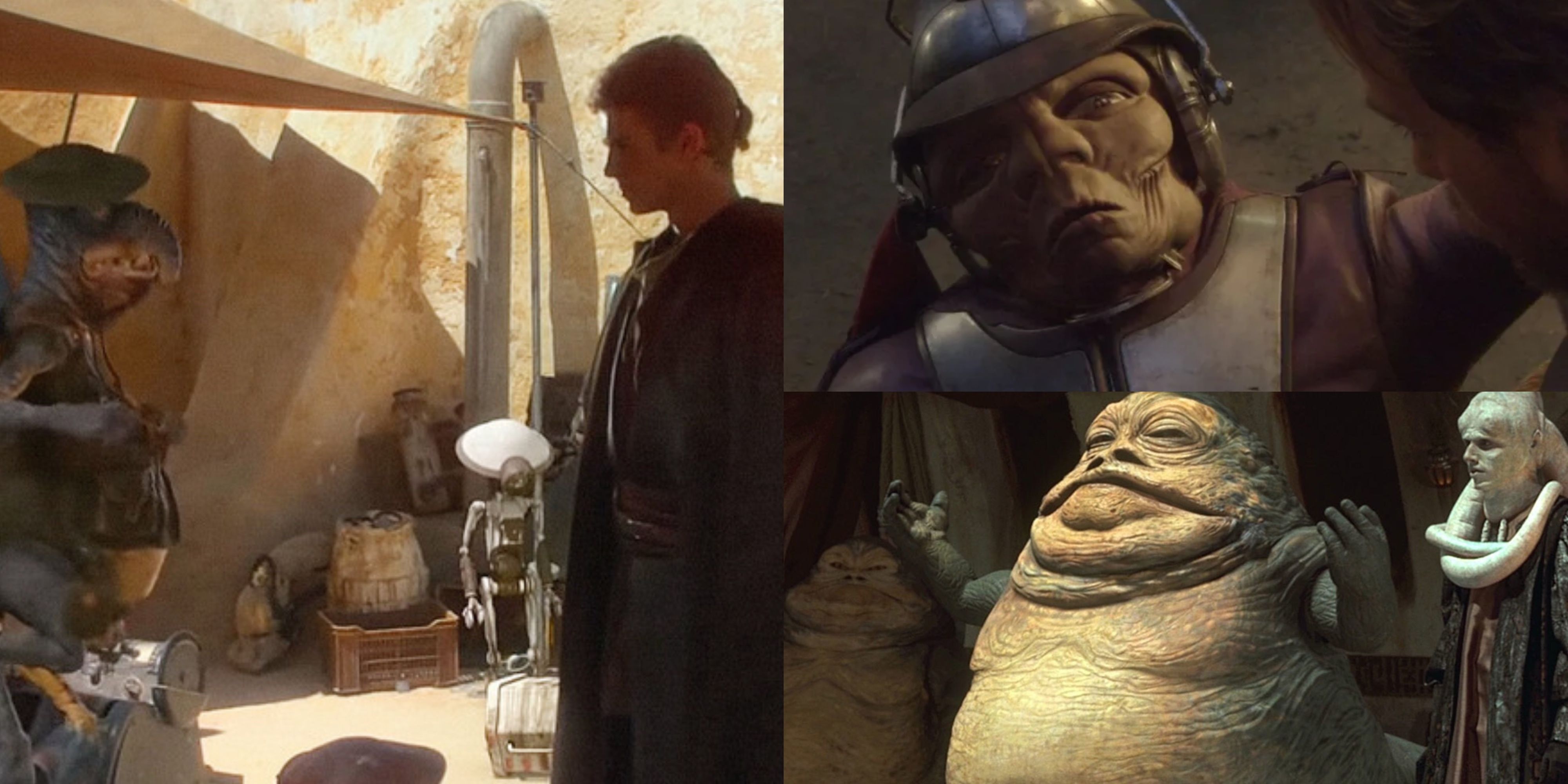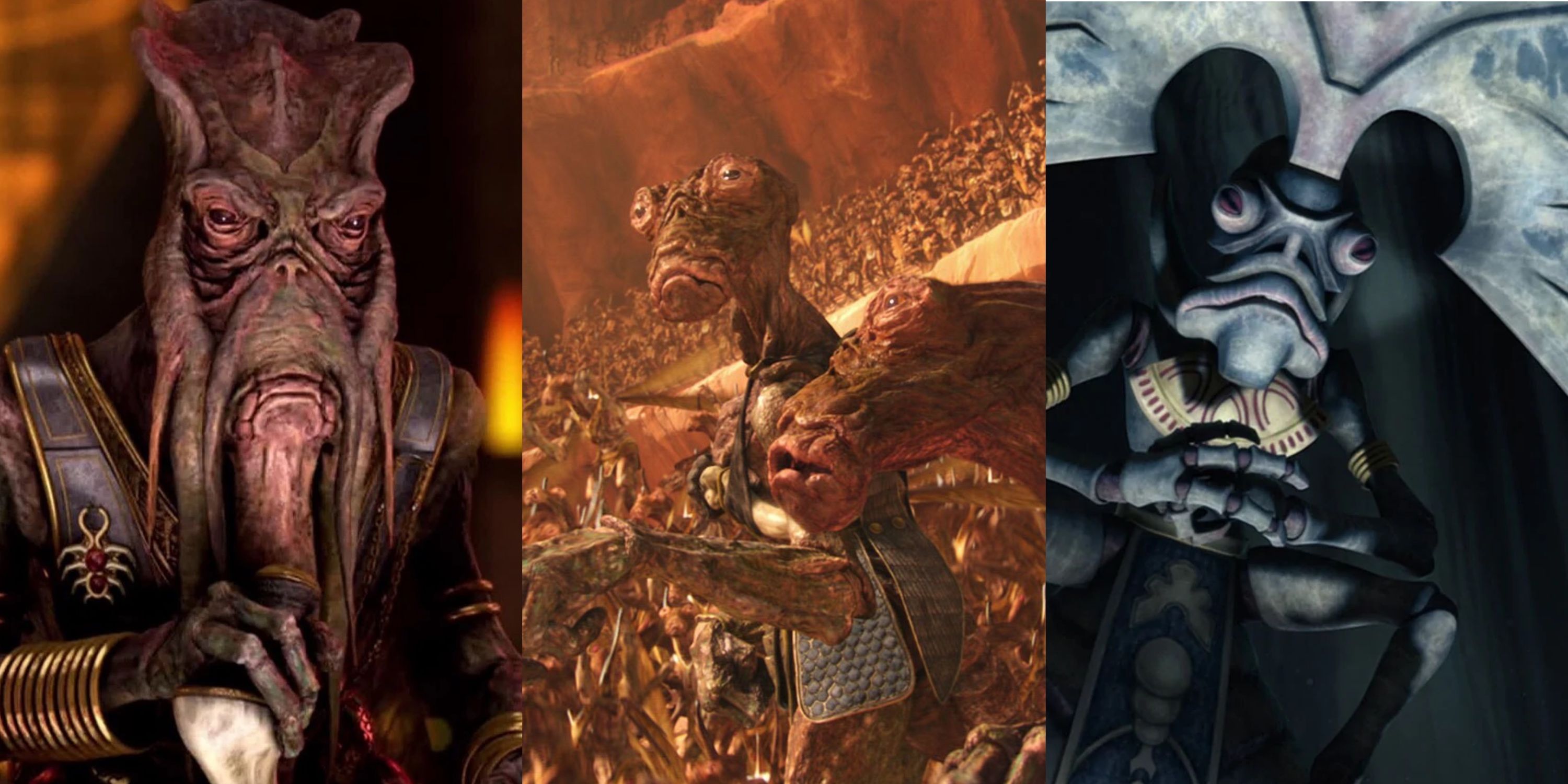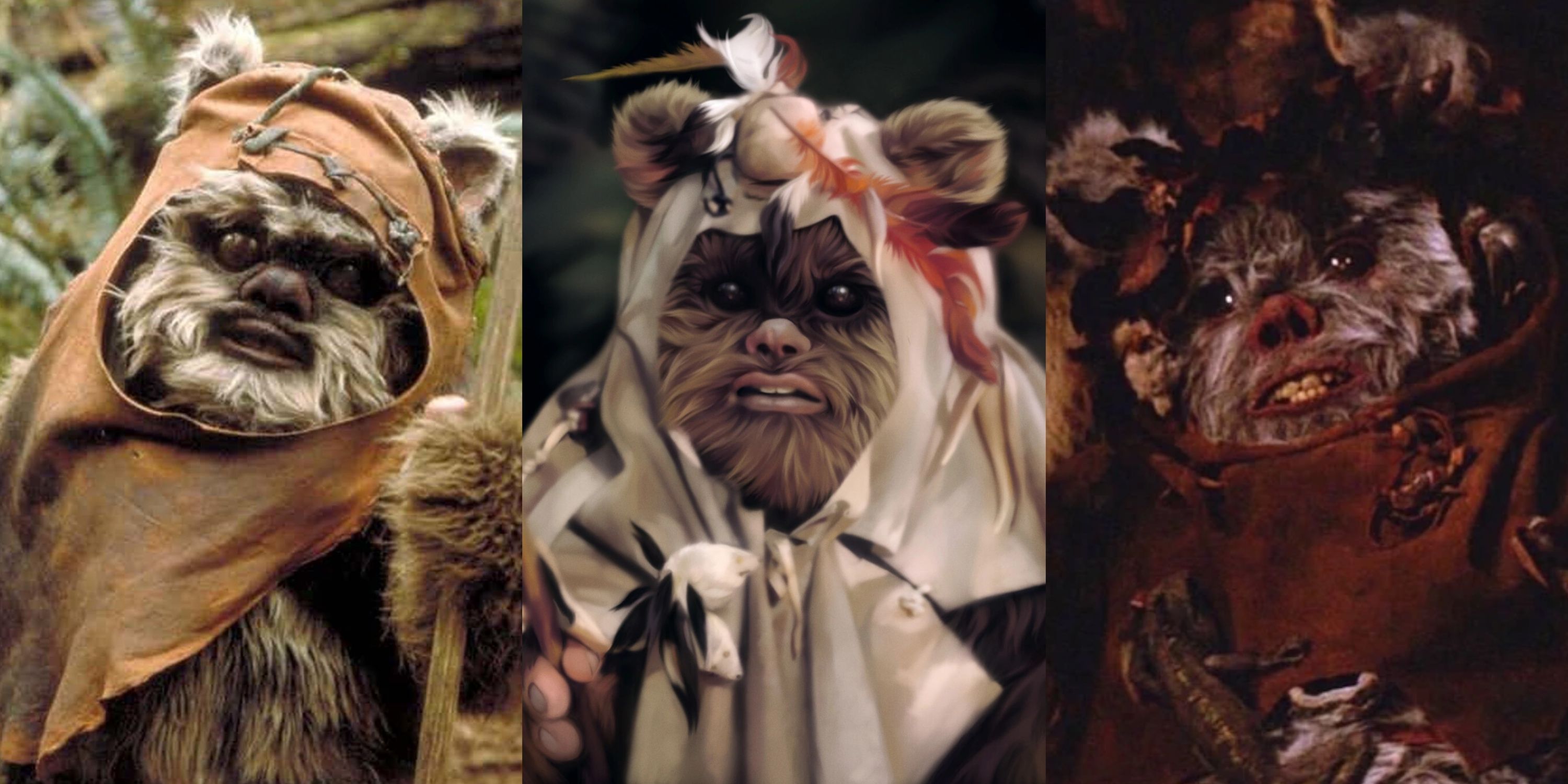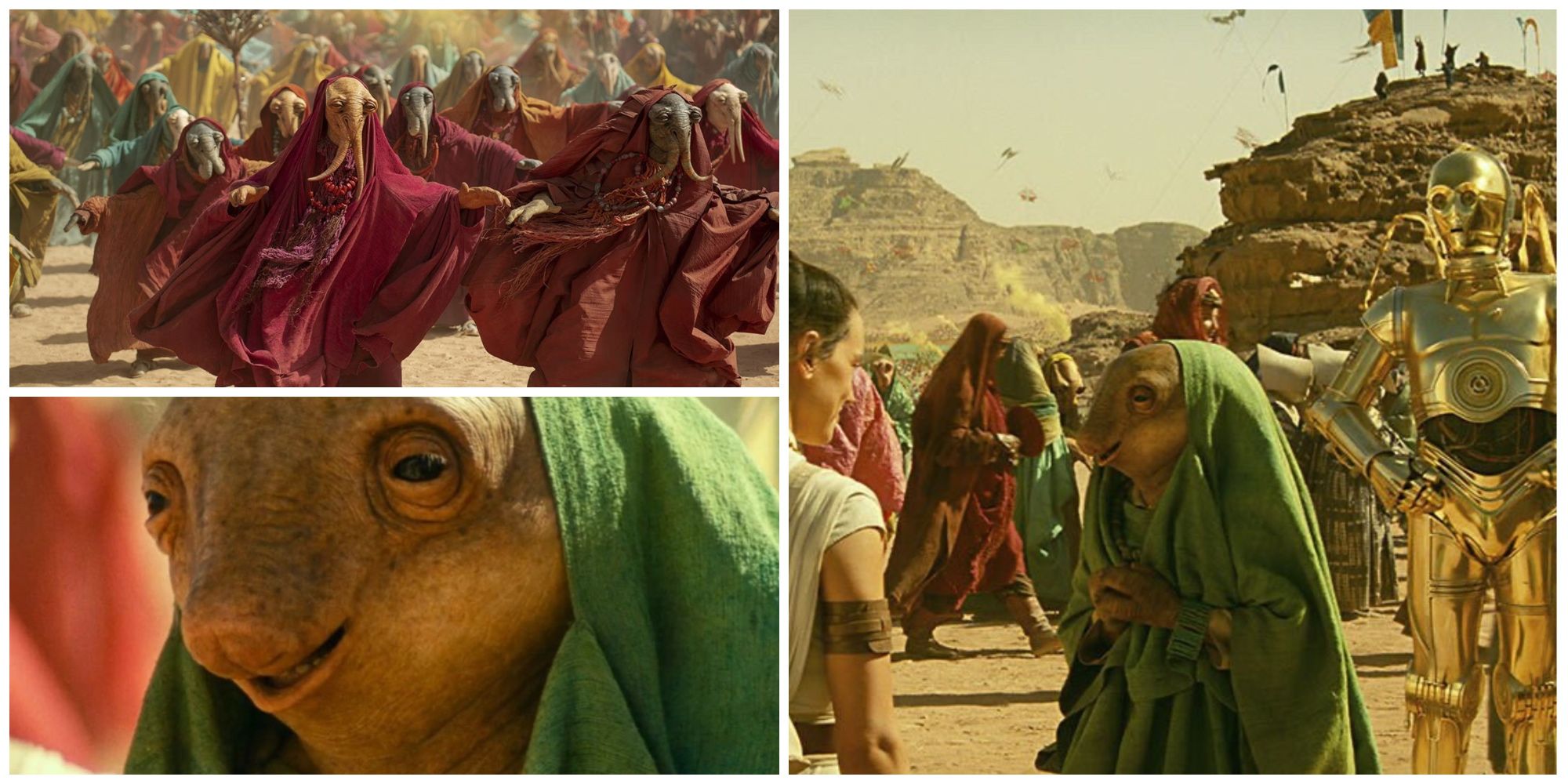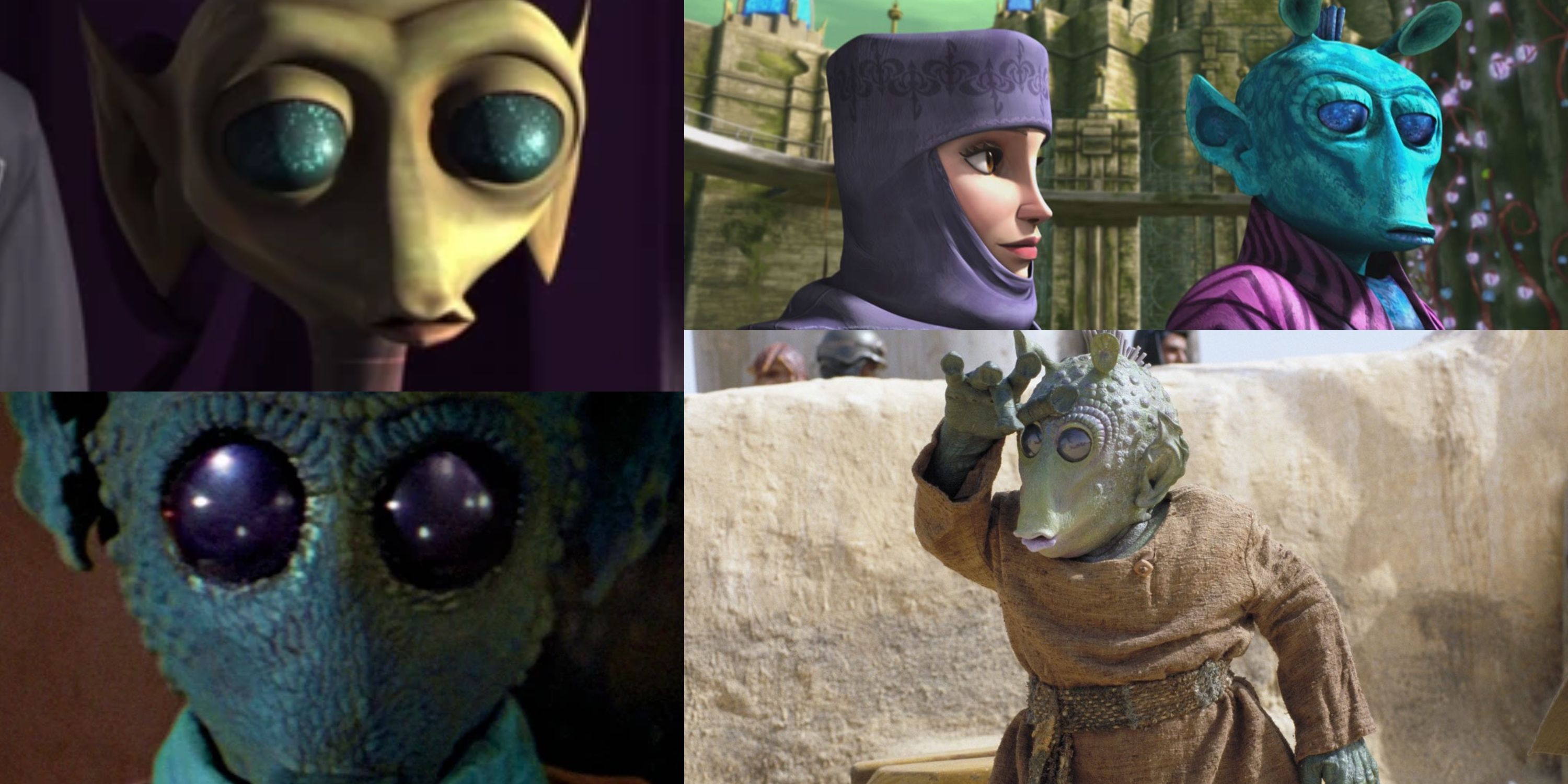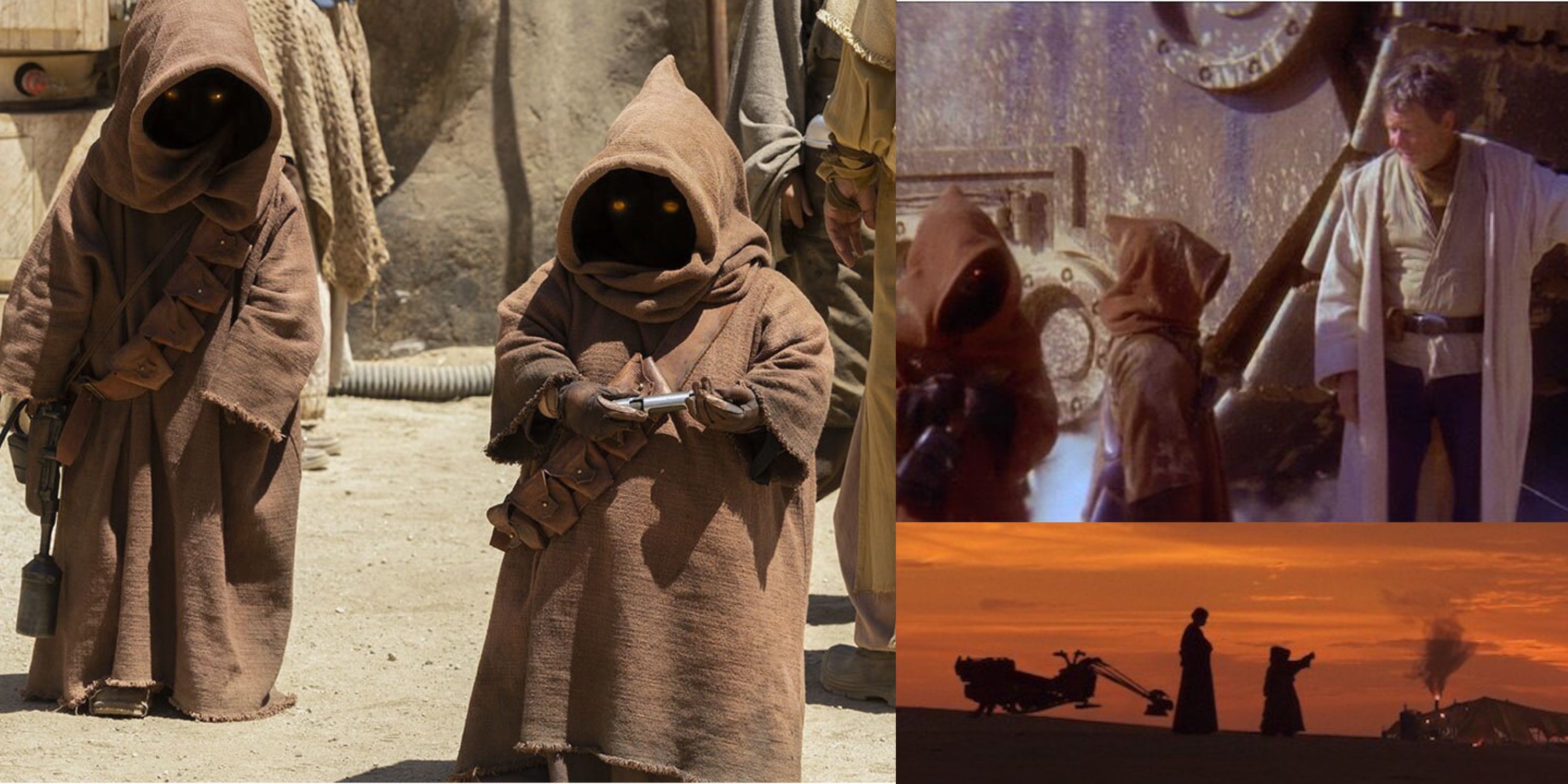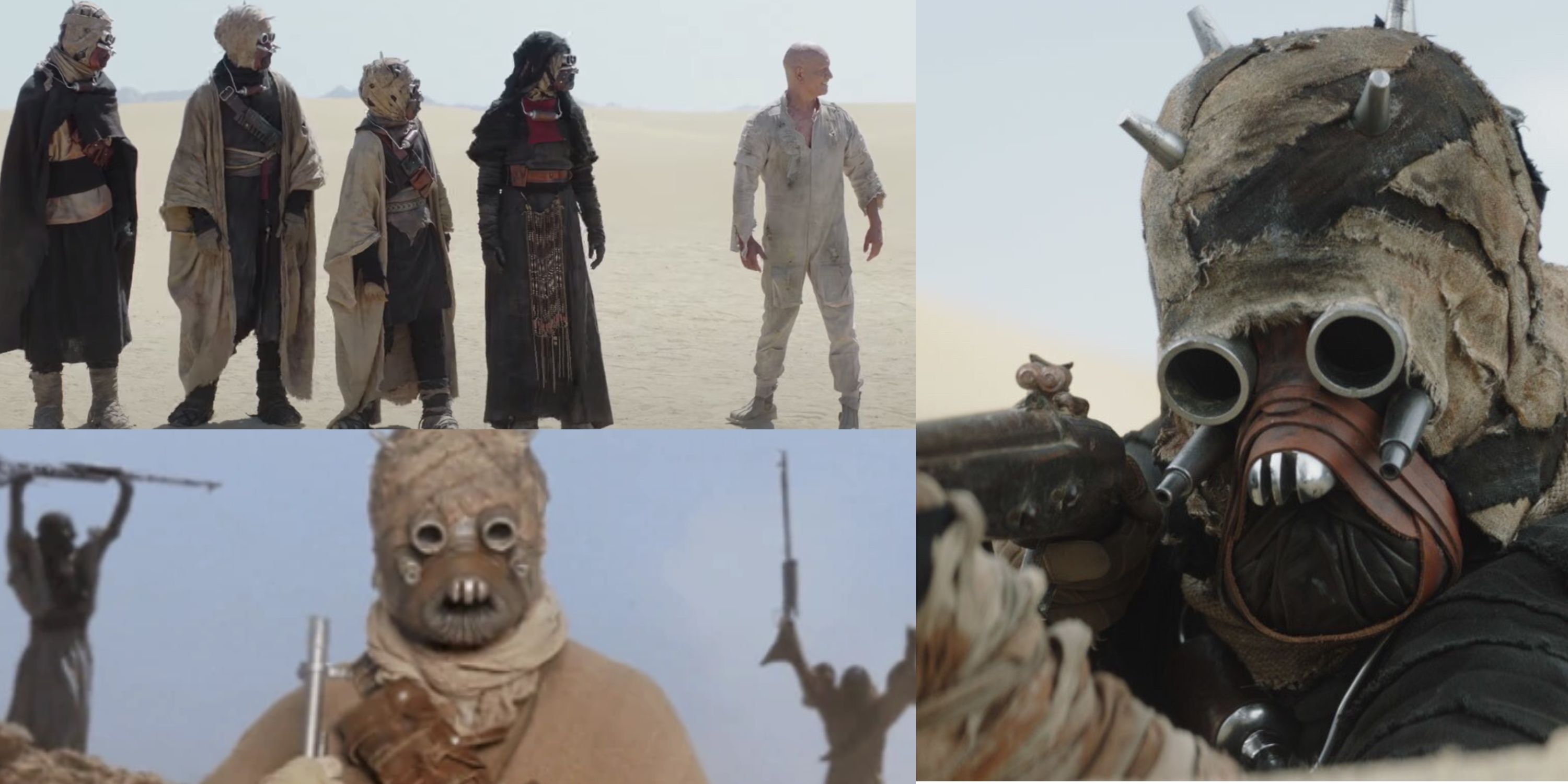Highlights
- Star Wars is known for its immersive world-building, which includes the development of unique and well-developed alien languages.
- Wookieespeak, Geonosian, and Jawaese are some of the fascinating and iconic alien languages featured in the Star Wars franchise.
With the first exposure to Star Wars in 1977, the world would forever be changed by how Star Wars would become one of the biggest franchises in all of pop culture. Yet, it wasn't just the swooshing lightsabers that won fans over, but the world-building with multiple alien languages that helped Star Wars feel so alive and immersive.
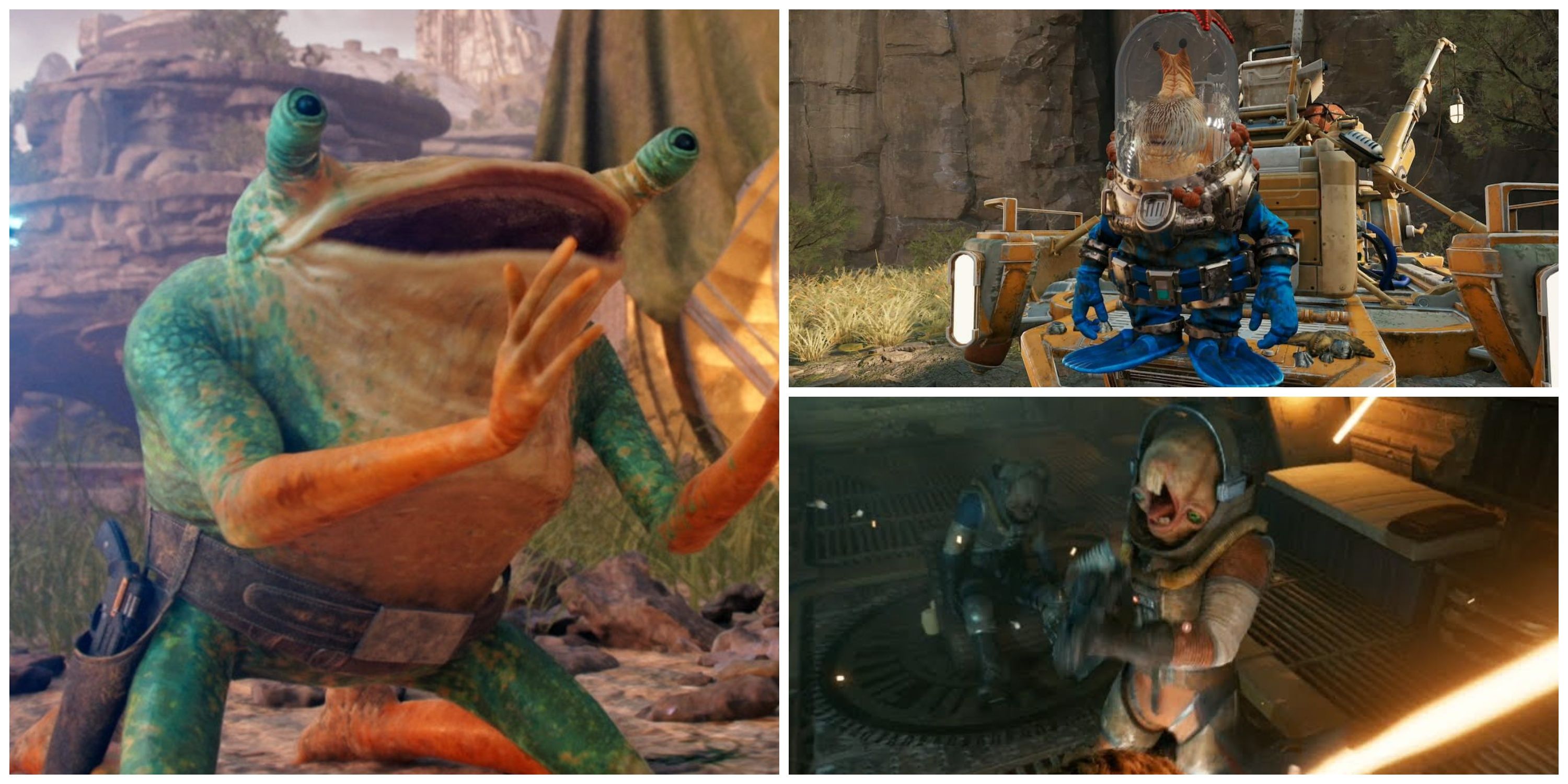
Star Wars Jedi: Survivor – 9 Interesting New Species The Game Introduces
Aliens are commonplace in the galaxy of Star Wars, and Star Wars Jedi: Survivor introduces some new and interesting alien species never seen before.
Star Wars contains a wide range of iconic alien creatures, who are presented with their own lore and backstories. They appear across every film and TV series; they’re so central to this franchise that it wouldn’t be the same without them; this is a galaxy far, far away after all! Many species even have a well-developed language system, and the story of their individual developments is rather fascinating.
8 Wookieespeak
One of the most beloved alien species, the Wookiees speaks a language called Shyriiwook. Known also as Wookieespeak, it’s very hard for non-Wookiees to learn due to the language being made up of growls and howls; very few, such as Han Solo, are able to understand it. Central to this language is its unique vocalizations, such as growling, moaning, and roaring. Chewbacca is the most famous of Shyriiwook speakers.
Shyriiwook was created for the movies by Ben Burtt, sound designer for the Star Wars films, as well as many other iconic titles like the Indiana Jones and Star Trek series. Burtt derived sounds from various animals including walrus, bears, and camels to create Chewbacca’s iconic roars. Using these noises in different proportions and mixing them created a wide range of unique sounds. Interestingly, for Solo: A Star Wars story, Chewbacca received an extended vocal range, made with manipulated recordings of seals and grizzly bears!
7 Huttese
This is the native language of the Hutts, a race of largely notorious crime lords, with Jabba as the most well-known. His species controls many planets across the galaxy such as Tatooine, thus Huttese is a widely-spoken language in Star Wars, the second most prevalent after Galactic Basic. This language is spoken by both humans and aliens; most notably the fallen Jedi Knight, Anakin Skywalker, who was fluent in Huttese even after spending 10 years on Coruscant as a Jedi Padawan. Bounty Hunter Zam Wesell’s last words are in Huttese when she insults Jango Fett after he shoots her with a poison dart.
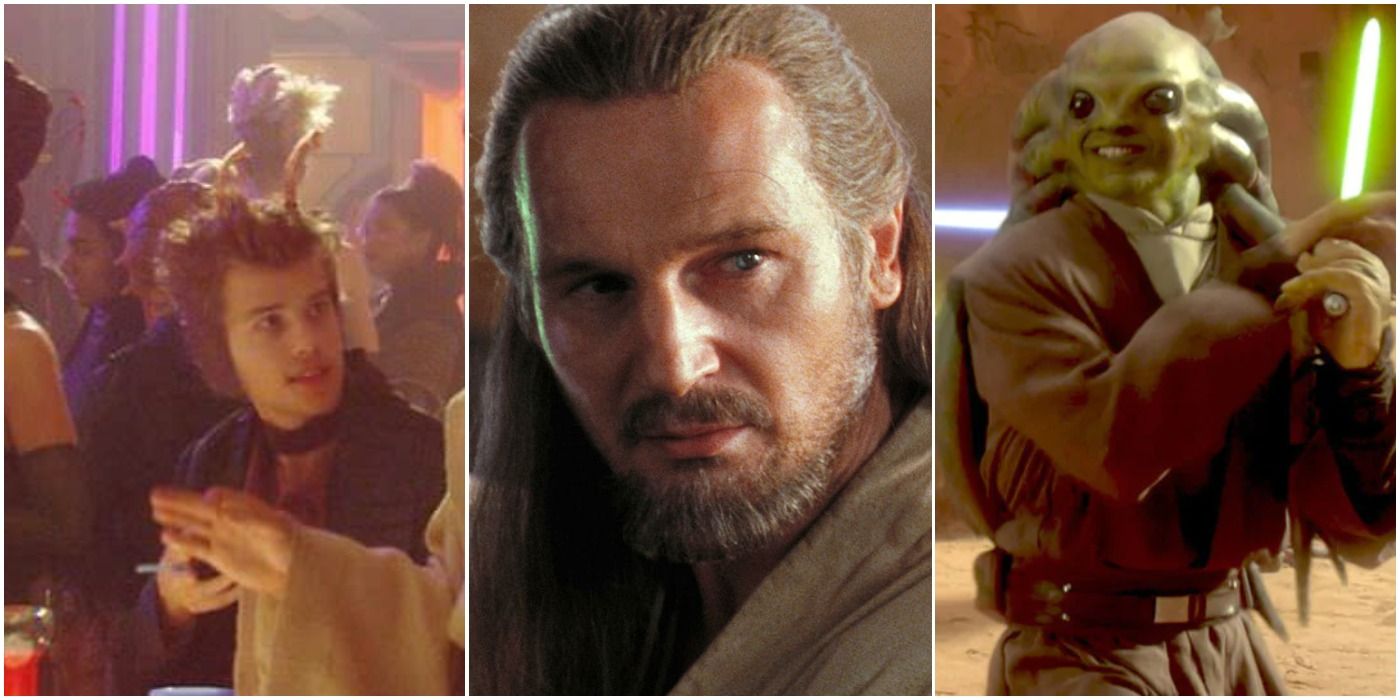
Star Wars: 10 Characters & Concepts That Were Underused By The Prequel Trilogy
While the Star Wars prequel trilogy introduced many interesting characters and concepts, quite a few of them were underused by the movies.
Invented for the original trilogy, sound designer Ben Burtt utilized the Quechua language for the development of Huttese. Quechua is a language family native to the Andean area of South America. Burtt had Jabba’s voice actor Larry Ward listen to recordings of the Quechua language, which Ward used as inspiration for improvising an alien language for the Hutt.
6 Geonosian
Native to the planet Geonosis as seen in Attack of the Clones, the winged (not so adorable) insect-like creatures’ language is certainly a unique one. Made up of a variety of clicking noises, the language actually comes from real-life animals from the Southern Hemisphere:
Whilst the prequels were being filmed in Australia, supervising sound editor Matthew Wood, also the voice of the iconic General Grievous, recorded 2 contrasting sounds that became the staple of Geonosian. The first was of penguins’ mating calls in a reserve in Melbourne, and the second was of fruit bats squabbling over a banana in Cairns. Ben Burtt used both of these unique call noises and once the sounds were mixed, the iconic Geonosian tongue was born.
5 Ewokese
The fan favorite cute species first seen in Return of the Jedi have a lively language designed by Ben Burtt and Randy Thom. In sound terms, this film was the most ambitious Star Wars movie at the time, and earned Burtt and Thom an Academy Award nomination. It was partially made up of tiger and chimpanzee noises.
Mostly though, Ewokese is inspired by real-life languages including Tibetan and North American Lakota. However, most of it was derived from Kalmyk, a nomadic language from Russia and Mongolia. Burtt brought an elderly woman named Kosi Unkov on set and recorded her speaking in Kalmyk. Unkov spoke about stories of her people and was encouraged to convey emotion. The recording was used by the Ewoks’ actors who imitated portions of it.
4 Aki-Aki
First seen in The Rise of Skywalker on the desert world Pasaana, the Aki-Aki are a friendly species, particularly well-known for their hospitality and welcoming nature. Even the youngest, such as Nambi Ghima who greets Rey and her company when they arrive on Pasaana to search for Ochi, offers her a husk necklace and welcomes her to the Festival of the Ancestors.
Nambi Ghima was played by Kiran Shah, but voiced by Debra Wilson. There’s little knowledge of the Aki-Aki language and lore, however Ghima’s dialect, which C-3PO translates for Rey, was not designed beforehand; Wilson was allowed to make up her own ‘Gibberish’ language for Nambi Ghima.
3 Rodian
The iconic Rodian species first appears in the original trilogy. Their homeworld is the jungle planet Rodia but they live across the galaxy, from Wald and Greedo on Tatooine to Senators Lolo Purs and Onaconda Farr on Coruscant. Senator Farr was even referred to as Padmés “Uncle Arno” in Star Wars: The Clone Wars due to how well he got on with her father Ruwee.

10 Dumbest Mistakes Made By Smart Star Wars Characters
Star Wars heroes and villains have shown strength and courage, but not all of their actions and decisions have always been the wisest.
Sound designer Ben Burtt first designed the Rodian language for A New Hope. Burtt created the Rodian dialect using real-life non-English languages and phrases, namely from the Quechua language as was used for Huttese.
2 Jawaese
Jawaese is the primary language of the Jawas, junk traders from Tatooine famous for their iconic Sandcrawler. A dialect of Jawaese is 'Jawa Trade Talk', used for buying and selling with non-Jawa species. Both Anakin Skywalker and Owen Lars were able to understand this more basic dialect, as seen in the movies.
Their language was first heard in A New Hope. Once again, it is one of Ben Burtt’s creations. Burtt wanted the Jawas to speak an organic tongue since they’re not droids. He listened to many recordings of various African languages, selecting Zulu as Jawaese’s basis. With these recordings listened to and re-recorded by actors, Burtt sped up these new recordings, editing certain sounds. The result was a noise that flowed well with a high pitch, what is known by fans as the Jawa’s instantly iconic language today.
1 Tusken
A nomadic people of the desert planet Tatooine also known as The Sand People, the Tusken Raiders frequently appear in Star Wars media. Portrayed as, according to Anakin’s stepfather Cliegg Lars, “vicious mindless monsters,” they are responsible for killing Anakin’s mother and eventually Cliegg’s son Owen and his wife Beru. However, in recent media like The Mandalorian and The Book of Boba Fett, the Tuskens appear more cautious, even willing to cooperate with Din Djarin and Boba Fett.
Their language relied entirely on oral tradition, with sounds like shrieking and grunting. This was created by Ben Burtt, derived from the noise of braying donkeys mixed at varying speeds and pitch. However, they also used Sign Language to communicate with Non-Tuskens like Djarin. Their Sign Language, as seen in The Mandalorian, was developed by the first deaf Oscar-winning actor, Troy Kotsur.

